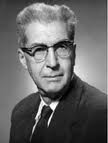Peyton Society
Established in honor of William T. Peyton, founding head of the University of Minnesota's Department of Neurosurgery, the William T. Peyton Society meets approximately every five years. All graduates and current and former faculty of the Neurosurgery Residency Training Program are members of the Society.
The Founder

William Thomas Peyton was born in Traverse County, Minn., in 1892. He attended St. John’s College in Collegeville, Minn., from 1911 – 1914, and the University of Minnesota from 1914 – 1918. He interned at Minneapolis General Hospital from July 1, 1918 – June 30, 1919 and from 1922 – 1926, served fellowships first in anatomy and then in surgery at the U of M. After a year at the Mayo Clinic as a fellow in surgery and neurology, he returned to the U of M in 1928 for a year as a fellow in surgery. During this time, he was granted the degrees of M.S., M.D. and two Ph.Ds, one in anatomy and the other in surgery.
Innovative Surgeon Who Adopted Neurological Surgery
Peyton joined the staff as an instructor at the U of M in 1929. He served as a general surgeon and became the most respected general surgeon on the staff. He was loved by all of the patients and was deeply respected by students and his colleagues throughout the state. Peyton was always interested in methods of pain relief and did many investigative studies on the effects of sectioning of the spinothalamic tracts and the descending root of the trigeminal nerve.
He also began studies on the relationship of the pituitary gland and cancer (mainly breast and testicular cancer). He carried on these studies during the 1930s and early 40s. More and more, his practice included patients with problems involving the head and neck and it was this that gradually led him into the field of neurological surgery.
Led the Beginning of Neurosurgery at the U
In 1937, the decision was made to form a Division of Neurological Surgery under the aegis of the Department of Surgery and Peyton was appointed the head of that division. In 1939, he was certified as a member, without examination, of the American Board of Neurological Surgery. In 1940, he initiated a training program in neurological surgery.
It was during his tenure as the head of that division that the use of fluorescein for distinguishing neoplastic from normal brain tissue was initiated. It was his suggestion that led to the use of an isotope (diiodofluorescein) for the external localization of intracranial neoplasms. He was very supportive of his trainees who published their investigative reports.
His trainees held him in very high regard and near the termination of his tenure as division head, the William T. Peyton Foundation was established to honor him. This letter from Lyle French and Shelley Chou, former department heads, to neurosurgeon Gerald Haines, M.D., Ph.D., (a former U of M resident) commemorates that event. His writings were extensive, covering a wide range of neurological subjects. Three of his major interests were cerebral vascular malformations, spinal and brain tumors, and operations for pain. Peyton and his wife, Clara, had four children.